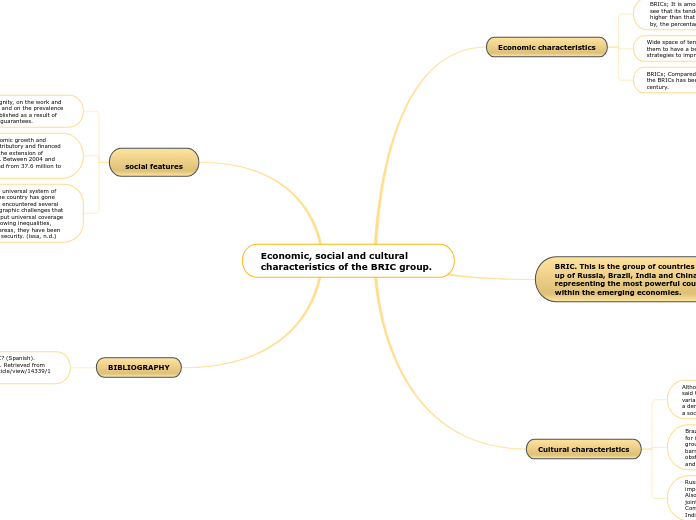Economic, social and cultural characteristics of the BRIC group.
Economic characteristics
BRICs; It is among its economic characteristics that we can see that its tendency to economic growth since the 1990s was higher than that of the world economy and as the decades go by, the percentage increases compared to that of the world.
Wide space of territory and natural resources; That allows them to have a better alternative for the development of strategies to improve their economy.
BRICs; Compared to world GDP growth, the upward trend of the BRICs has been higher during the beginning of the 21st century.
BRIC. This is the group of countries made up of Russia, Brazil, India and China, representing the most powerful countries within the emerging economies.
Cultural characteristics
Although the four BRICs are federal countries, it cannot be said that what unites them are cultural and/or political variables. Brazil and India are democracies, Russia is formally a democracy, although with increasing hollowing out, China is a socialist republic
Brazil is a market that offers great opportunities. The demand for its tourist attraction is high as in other countries in this group, but its long-term stability is expected. Although cultural barriers, although existing, can be easily overcome. The main obstacles in the Brazilian market are the complex bureaucracy and the lack of infrastructure.
Russia, was declared the year of India in Russia, with an important deployment of cultural and academic meetings. Also, in 2013, the countries have agreed to the formation of a joint working group to assess the possibility of signing a Comprehensive Economic Cooperation Agreement between India and the Customs Union
social features
State founded on respect for human dignity, on the work and solidarity of the people that make it up and on the prevalence of the general interest". Dignity is established as a result of the minimum recognition of rights and guarantees.
In Brazil, the combination of rapid economic growth and progressive social security policies (contributory and financed by taxes) has led in the last decade to the extension of coverage and a decrease in inequalities. Between 2004 and 2014, jobs in the formal sector increased from 37.6 million to 56.5 million. (issa, s.f.).
Russia inherited from the Soviet era a universal system of social security. In the last 20 years, the country has gone through a period of transition and has encountered several important social, economic and demographic challenges that put pressure on existing regimes and put universal coverage at risk. To face new challenges and growing inequalities, particularly between rural and urban areas, they have been introduced in essential areas of social security. (issa, n.d.)
BIBLIOGRAPHY
Turzi, M. (2011). How important is the BRIC? (Spanish). International Studies, 44(168), Pp 87 - 111. Retrieved from https://revistaei.uchile.cl/index.php/REI/article/view/14339/14653
